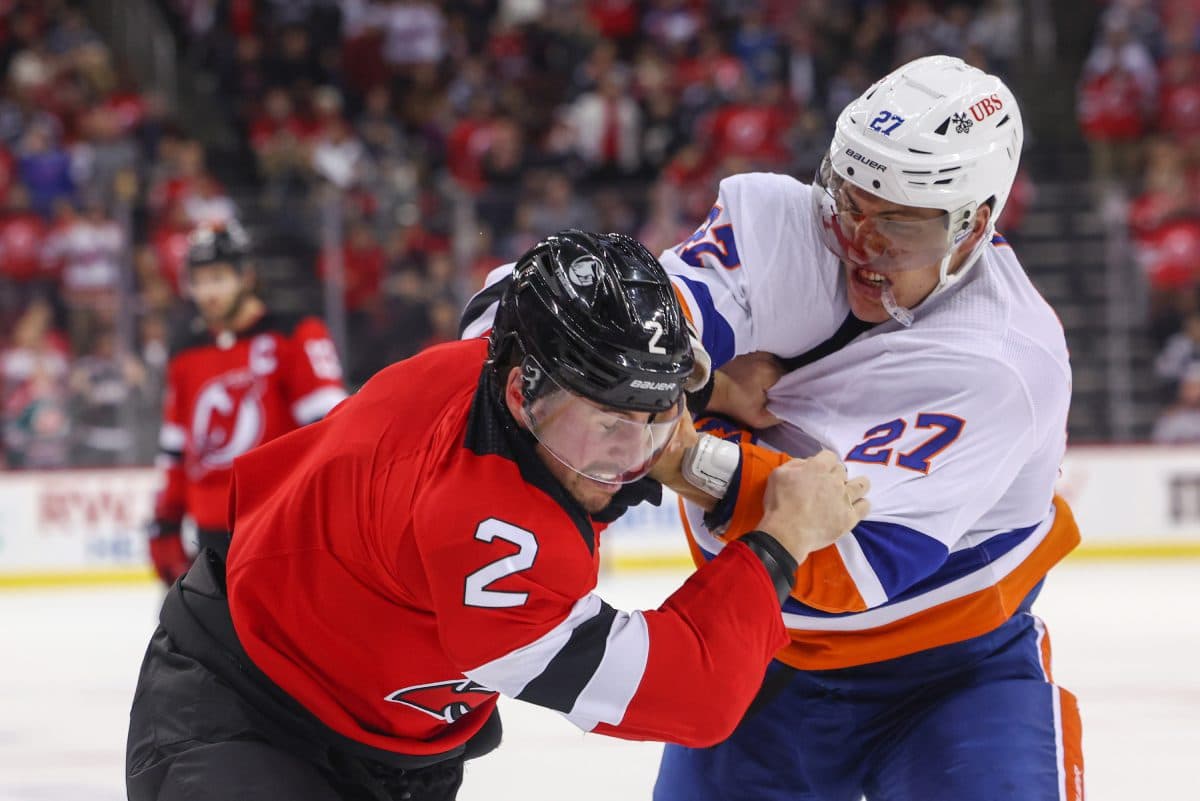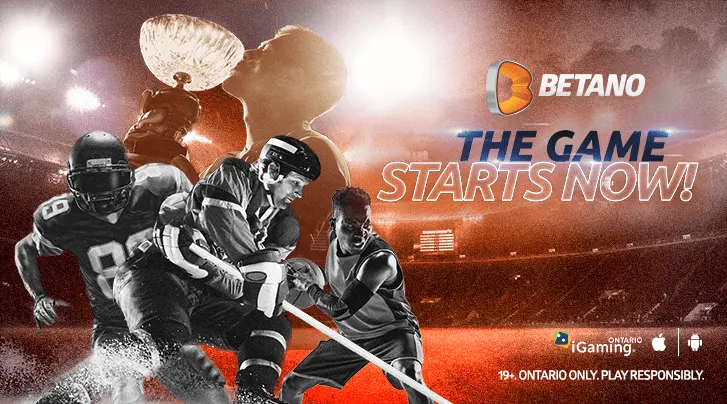Why fighting is rising in the NHL: Four theories

“Every player on the ice has a 10-minute misconduct.”
Things got out of hand between the Florida Panthers and Ottawa Senators on Nov. 27, a game in which 167 combined penalty minutes were handed out. The melee started when Senators captain Brady Tkachuk streaked in on Sergei Bobrovsky for a breakaway and bumped into ‘Bob’ after he made the save. A flurry of fists ensued, with Tkachuk taking on several Panthers at once before every player on the ice joined in.
It felt a lot like Old Time Hockey, right? The kind of thing you’d see regularly in the 1970s, for instance, with Mike Milbury climbing the stands and beating a fan with his own shoe.
The Panthers-Senators fiasco fit what seems to be an emerging vibe in the NHL: fighting is up.
The trend actually didn’t start this season. After fights league-wide reached a modern-era low of 0.15 per game in 2019-20, they rose to 0.22 in 2020-21, then 0.25 in 2021-22. Last season and this season: 0.26.
The increase might seem relatively marginal – a jump from 0.25 to 0.26, between 2021-22 and 2022-23, for instance, meant just three additional bouts league wide. But if you zoom out further: we’re at 0.256 in the past three seasons, up from 0.183 the previous three seasons. Zoom out even further: when we consider that fighting had been in fairly steady decline in the salary-cap era, even levelling off would’ve constituted a mild surprise. So it’s especially unexpected to see the trend reversing course.
Per hockeyfights.com, here are the fights per game in the NHL since 2005-06:
| Season | Fights per game |
| 2005-06 | 0.38 |
| 2006-07 | 0.40 |
| 2007-08 | 0.54 |
| 2008-09 | 0.60 |
| 2009-10 | 0.58 |
| 2010-11 | 0.52 |
| 2011-12 | 0.44 |
| 2012-13 | 0.48 |
| 2013-14 | 0.38 |
| 2014-15 | 0.32 |
| 2015-16 | 0.28 |
| 2016-17 | 0.30 |
| 2017-18 | 0.22 |
| 2018-19 | 0.18 |
| 2019-20 | 0.15 |
| 2020-21 | 0.22 |
| 2021-22 | 0.25 |
| 2022-23 | 0.26 |
| 2023-24 | 0.26 |
So why are the fists starting to fly more? Has anything significant changed in the league culture?
We have the data. Now it’s time for the anecdotal evidence. With input from some retired NHL enforcers, here are some theories as to why fighting has ticked back upward.
THEORY 1: Fighting immediately after a big hit
1a: Media hype & social media
I’m as guilty of it as anyone: many of us media folk like to push a “response” narrative. Look what happened when the Toronto Maple Leafs didn’t immediately fight after defenseman Timothy Liljegren got seriously hurt in a collision with the Boston Bruins’ Brad Marchand last month. Leafs coach Sheldon Keefe took questions about it and expressed how much he hated the lack of response from his team. Twitter critics asked what the point was of signing throwback bruiser Ryan Reaves if he wasn’t being used to carry out vengeance in situations like these.
An external pressure to stick up for teammates exists, and a lot of it stems from social media, says one former NHL enforcer.
“They drum up that there was no response to a certain play, and every guy feels you have to go out and fight at the drop of a hat after any given hit,” he said. “I almost feel like, something happens like that, and the players get shamed, and there’s a lot of attention paid to a team not responding, and all of a sudden they’re overreacting to a bunch of shit.”
1b: Players’ inability to take hits properly
Let’s drill deeper on the concept of overreacting to a hit. Last week, after rookie New Jersey Devils defenseman Luke Hughes got blown up on a clean hit by the Philadelphia Flyers’ Garnet Hathaway, the Devils’ Jonas Siegenthaler immediately dropped the gloves with Hathaway in response, and Hathaway received a match penalty for boarding. Flyers coach John Tortorella lamented that players aren’t properly taught to take hits anymore; Hughes got drilled while waiting for a whistle that didn’t come. According to multiple former NHL enforcers, modern players’ inability to brace and take body contact properly is the No. 1 reason fighting has increased.
“It’s shocking to me how they put themselves in such vulnerable positions, whereas every other time in hockey history, a guy is ready to engage and brace himself,” said a retired NHLer. “And they just go in so nonchalantly that when you do just finish your check on a guy, they go flying, or go into the boards in such weird ways, or get taken off their feet, and that’s why it’s this big outrageous reaction. Because it’s like, ‘Holy smokes, what did you just do to our guy?’ ”
And as another former NHL enforcer puts it: when a big hit happens and you’re on the ice, you don’t have time to process whether it’s clean. You see your teammate in a heap and immediately respond.
“I definitely think players not being as prepared to take contact makes hits look bigger or feel bigger,” he said. “So that certainly can be part of it too…when you’re less prepared for a hit, the hit can become more impactful visually.”
One former NHL enforcer believes the improvements in the rulebook, designed to limit head contact, occasionally have the opposite effect, because players are no longer expecting to take heavy contact in puck retrieval situations. As a result: we get the Luke Hughes play: not prepared to be hit, gets hit, it looks bad, and a fight ensues to avenge what is perceived to be a predatory blow.
THEORY 2: Depleted talent pool from expansion
One reason why scoring – and fighting – exploded in the 1970s and 1980s? Expansion. The NHL grew from six teams in 1966-67 to 21 teams by 1979-80. With the player population exploding, the standard required to make the NHL dropped dramatically, watering down the talent pool, ushering in more goons and more goals.
The NHL added expansion teams in 2017-18 and 2021-22, spiking the franchise pool from 30 to 32, adding dozens of players. Happening at pretty much the same time: the league reached its highest scoring rate in close to 30 years and the fight rate rose. Many additional roster spots opened up for players previously squeezed out of the league, and the types of players lingering on the outside are often bottom-six grinders who play rugged styles.
THEORY 3: Decline of the heavyweights, rise of the cruiserweights
How’s this for irony: as the true goons, the one-dimensional punching machines in the vein of Peter Worrell or the late Derek Boogaard, have been phased out of the game, it might have caused a delayed increase in fights. That’s the theory of one former NHL enforcer. With the biggest bullies gone from the school yard, there are fewer deterrents to mischief.
“These players coming up now, some of them are realizing that there’s not those big boys on the block as much anymore,” he said. “And then they can get their physical game going, whereas before they would say, ‘I want nothing to do with those super heavyweights’ that were out there in the past. Now that those guys have been pulled back, other guys can elevate their game to be more physical, to grab ahold of a guy, to be that more physical style of player.”
He mentioned that the fight leaderboards don’t have super high totals anymore and that we have far more players fighting a handful of times a year as a result of the cruiserweights feeling more comfortable throwing hands with no absolute maulers on the scene – Reaves excepted.
In 1996-97, the Florida Panthers’ Paul Laus set an NHL single-season record with 39 major penalties. No player has reached 30 since 2009-10, no one has eclipsed 25 since 2010-11, and none has even exceeded 15 majors since 2017-18. The Super Goon is clearly extinct. But while the number of individual players taking major penalties has increased in recent seasons, it also coincided with more teams and players joining the league.
THEORY 4: Statistical anomaly
If you don’t buy any of the anecdotal theories about the resurgence of fighting: you could argue that the rise is miniscule enough that it could be chalked up to pure statistical fluke.
If the jump to 0.26 was only occurring this season, which is less than a third complete, statistical randomness would have more weight as a theory. But when we’ve seen a clear rise over the past three seasons, there does appear to be a meaningful shift in NHL fighting culture.
_____

Discover Betano.ca – a premium Sports Betting and Online Casino experience. Offering numerous unique and dynamic betting options along with diverse digital and live casino games, Betano is where The Game Starts Now. 19+. Please play responsibly.
Recently by Matt Larkin
- Redrafting the NHL’s class of 2009 as top-three picks Tavares, Hedman, Duchene hit milestones
- ‘Much more talkative’ David Pastrnak embracing leadership role with Boston Bruins
- Are the 2023-24 Toronto Maple Leafs a paper tiger?
- Seven defensemen the Toronto Maple Leafs could pursue in a trade
- NHL Awards Watch: Canucks’ Quinn Hughes, Thatcher Demko among early frontrunners
More from Matt Larkin
- 10 staggering on-pace stats to track so far in 2025-26 NHL season
- Matt Larkin’s midseason fantasy hockey top 300 player rankings for 2025-26
- This Week in the NHL: Will Carter Hart get start against former team?
- If Canucks do the unthinkable and trade Quinn Hughes…what would be his ideal landing spot?
- 2026 Olympics: Imagining the (banned) Team Russia roster